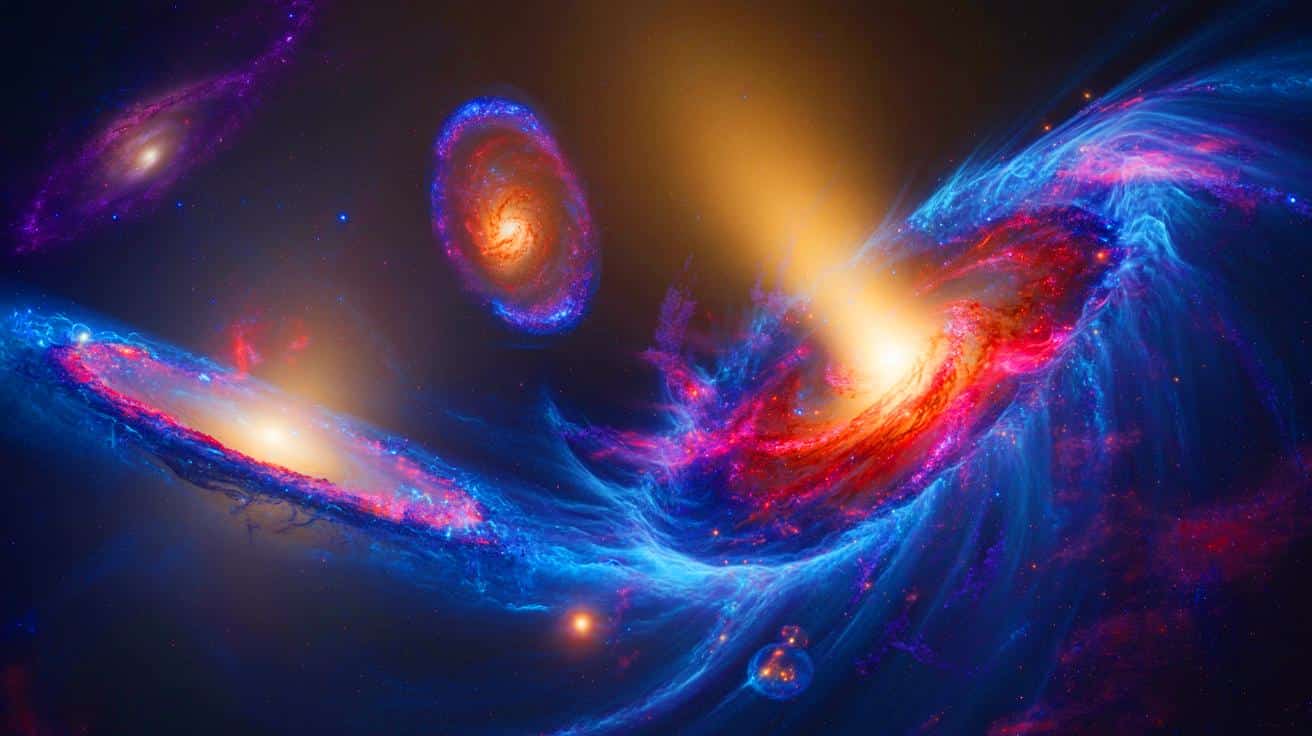Is Dark Matter Just a Cosmic Illusion? Shocking New Theory Revealed!

Have you ever pondered the true nature of the universe? What if the elusive dark matter and dark energy—forces that scientists believe shape our cosmos—are nothing more than mirages created by weakening cosmic forces? That’s the audacious claim from Rajendra Gupta, a researcher at the University of Ottawa, who’s shaking the foundations of astrophysics with a groundbreaking study.
For decades, dark matter and dark energy have been the go-to explanations for the strange dynamics we observe in the universe. These concepts were crafted to account for the invisible mass affecting galaxy rotation and the inexplicable acceleration of cosmic expansion. But Gupta dares to challenge that entire narrative, suggesting that what we perceive as these mysterious forces may simply be illusions stemming from the gradual weakening of the universe’s fundamental forces over time.
Imagine a universe that’s not static but evolving—an idea that could turn our understanding upside down! Gupta contends that as the universe ages, its fundamental forces, including gravity, are not constant but diminish. This decline could create the illusion of dark energy propelling the universe’s expansion at alarming rates. By offering a new perspective on how galaxies rotate and cluster, Gupta’s theory proposes that the supposed gravitational anomalies are actually the result of these changing constants of nature.
One of the most striking features of Gupta’s model is its ability to unify cosmic phenomena that previously required different explanations. Traditionally, scientists have had to employ separate equations for describing cosmic and galactic behaviors. However, with Gupta’s innovative approach, a single evolving parameter, α, functions like an extra gravitational force, tying everything together.
This new lens allows for predictions about galactic rotation curves—those perplexing speeds at which stars orbit—without invoking dark matter. It’s a significant leap that could resolve longstanding issues in our cosmic models.
Moreover, Gupta’s theory doesn’t just stop there; it also extends the universe’s timeline, potentially doubling its age, which would provide enough time for early galaxies to form and evolve into their massive states. This new timeframe alters everything, suggesting that our understanding of cosmic history might be radically incomplete.
In practical terms, Gupta’s model indicates that regions rich in standard matter—like stars and planets—experience less of the gravitational effects from α, while areas with sparse matter see more pronounced effects. This insight could render the pursuit of elusive dark matter particles unnecessary, a shift that might redirect funding and research priorities in the field.
As Gupta provocatively states, “Sometimes, the simplest explanation is the best one.” If the universe’s grand mysteries can be explained by these evolving forces, it begs the question: Are we overcomplicating the narrative of the cosmos? This revelation could spark a new wave of research that focuses on the true nature of cosmic interactions rather than chasing shadows.
As we venture deeper into the cosmos, Gupta’s theory challenges us to rethink our basic assumptions about the universe. What if the answers to the universe’s mysteries lie in the simplicity of nature’s changes? This question not only forces us to reevaluate our current understanding but also invites us to explore the cosmos with fresh eyes, unearthing the truths that have eluded us for so long.
























